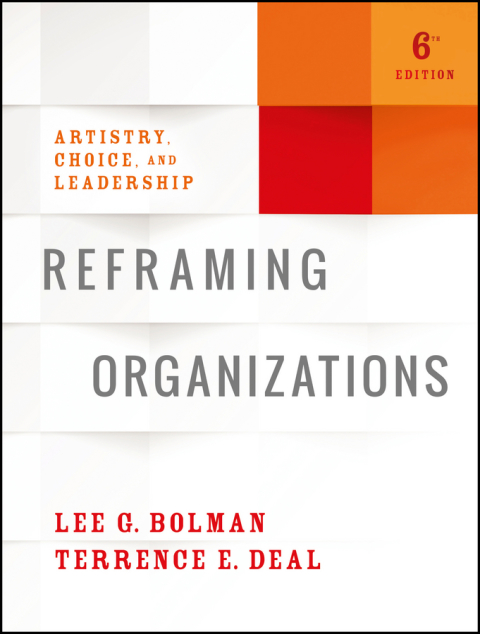Description
Efnisyfirlit
- Cover
- Series Page
- Title Page
- Copyright
- Dedication
- Preface
- Acknowledgments
- Part One: Making Sense of Organizations
- Chapter 1: Introduction
- Virtues and Drawbacks of Organized Activity
- Framing
- Conclusion
- Notes
- Chapter 2: Simple Ideas, Complex Organizations
- Common Fallacies in Explaining Organizational Problems
- Peculiarities of Organizations
- Organizational Learning
- Coping with Ambiguity and Complexity
- Conclusion
- Notes
- Part Two: The Structural Frame
- Chapter 3: Getting Organized
- Structural Assumptions
- Origins of the Structural Perspective
- Strategy
- Structural Forms and Functions
- Basic Structural Tensions
- Vertical Coordination
- Lateral Coordination
- Designing a Structure That Works
- Conclusion
- Chapter 4: Structure and Restructuring
- Structural Dilemmas
- Structural Configurations
- Generic Issues in Restructuring
- Conclusion
- Chapter 5: Organizing Groups and Teams
- Tasks and Linkages in Small Groups
- Teamwork and Interdependence
- Determinants of Successful Teamwork
- Team Structure and Top Performance
- Self-Managing Teams: Structure of the Future?
- Conclusion
- Part Three: The Human Resource Frame
- Chapter 6: People and Organizations
- Human Resource Assumptions
- Work and Motivation: A Brief Tour
- Human Capacity and the Changing Employment Contract
- Conclusion
- Note
- Chapter 7: Improving Human Resource Management
- Getting it Right
- Getting There: Training and Organization Development
- Conclusion
- Note
- Chapter 8: Interpersonal and Group Dynamics
- Interpersonal Dynamics
- Management Styles
- Groups and Teams in Organizations
- Conclusion
- Part Four: The Political Frame
- Chapter 9: Power, Conflict, and Coalition
- Political Assumptions
- Organizations as Coalitions
- Power and Decision Making
- Conflict in Organizations
- Moral Mazes: The Politics of Getting Ahead
- Conclusion
- Chapter 10: The Manager as Politician
- Political Skills
- Morality and Politics
- Conclusion
- Chapter 11: Organizations as Political Arenas and Political Agents
- Organizations as Arenas
- Organizations as Political Agents
- Political Dynamics of Ecosystems
- Conclusion
- Part Five: The Symbolic Frame
- Chapter 12: Organizational Symbols and Culture
- Symbolic Assumptions
- Organizational Symbols
- Organizations as Cultures
- Conclusion
- Chapter 13: Culture in Action
- The Eagle Group’s Sources of Success
- Conclusion
- Note
- Chapter 14: Organization as Theater
- Dramaturgical and Institutional Theory
- Organizational Structure as Theater
- Organizational Process as Theater
- Conclusion
- Part Six: Improving Leadership Practice
- Chapter 15: Integrating Frames for Effective Practice
- Life as Managers Know It
- Across Frames: Organizations as Multiple Realities
- Matching Frames to Situations
- Effective Managers and Organizations
- Managers’ Frame Preferences
- Conclusion
- Chapter 16: Reframing in Action
- Benefits and Risks of Reframing
- Reframing for Newcomers and Outsiders
- Conclusion
- Chapter 17: Reframing Leadership
- Leadership in Organizations: A Brief History
- Evolution of the Idea of Leadership
- What Do We Know About Good Leadership?
- Culture and Leadership
- Gender and Leadership
- Reframing Leadership
- Conclusion
- Note
- Chapter 18: Reframing Change in Organizations
- The Innovation Process
- Change, Training, and Participation
- Change and Structural Realignment
- Change and Conflict
- Change and Loss
- Change Strategy
- Conclusion
- Chapter 19: Reframing Ethics and Spirit
- Soul and Spirit in Organizations
- Conclusion
- Note
- Chapter 20: Bringing It All Together
- Robert F. Kennedy High School
- Structural Issues and Options
- Human Resource Issues and Options
- Political Issues and Options
- Symbolic Issues and Options
- A Four-Frame Approach
- Conclusion: The Reframing Process
- Note
- Epilogue: Artistry, Choice, and Leadership
- Appendix: The Best of Organizational Studies
- Bibliography
- The Authors
- Name Index
- Subject Index
- End User License Agreement






Reviews
There are no reviews yet.